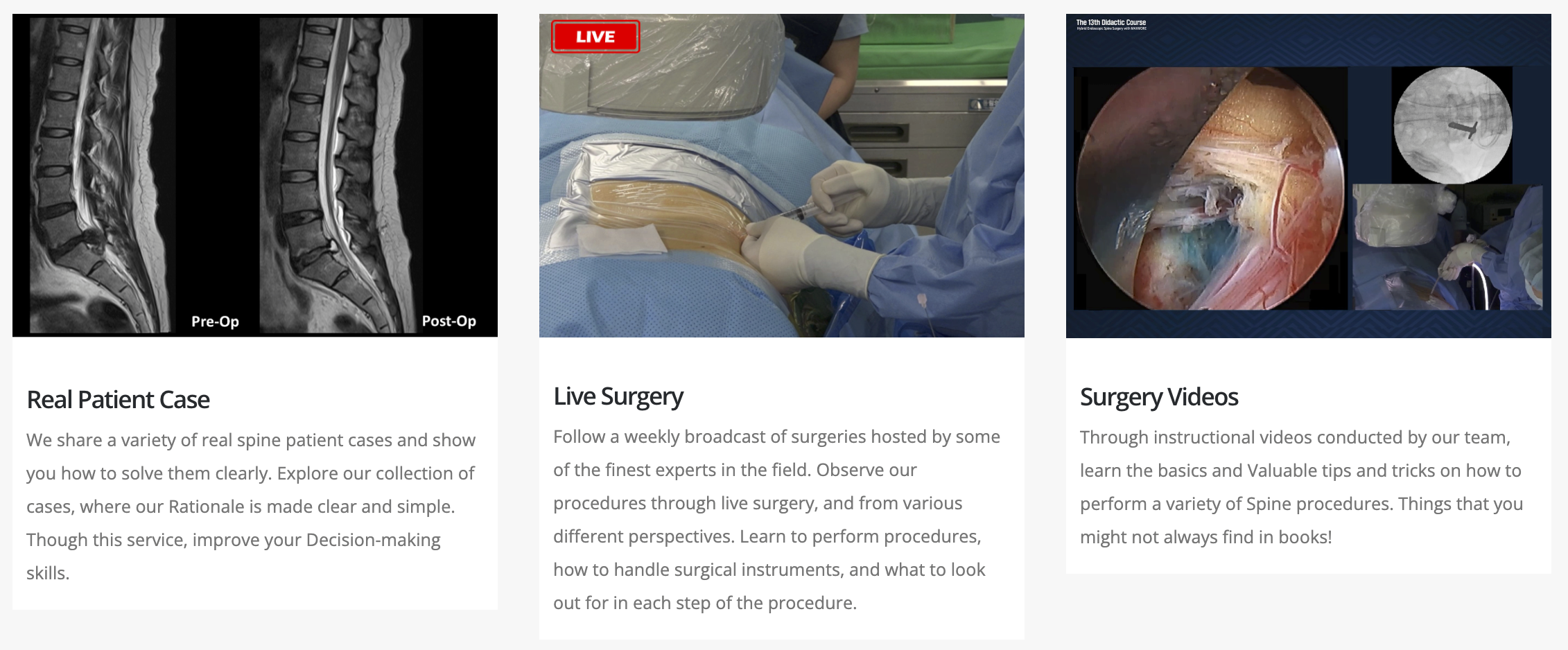Advantages of MISS
Minimally invasive surgery has proven to be more advantageous than conventional open surgery methods in that it preserves natural anatomical structures as much as possible and minimizes postoperative complications.
1. Minimize Incision and Surgical Site
There are fewer tissue dissection and muscle trauma, and fewer scars due to minimal skin damage.
2. Shortening of surgical period
There is less damage to the epidural blood supply, resulting in reduced blood loss and no epidural fibrosis and scarring.
3. Shortening hospitalization period and early functional recovery
Minimizing the surgical site, shortening the surgical period, and minimizing blood loss can aim for shortening the hospitalization period and early functional recovery.
Disadvantages of MISS
However, the big disadvantage is that these advancements require a longer learning curve.

It's Hard to Learn Surgery
Climbing the learning curve is diffcult & takes time.
There is a lot of Radiation Exposure
In performing surgery using c-arm, exposure to radiation in the learning process is inevitable.
And the equipment is Expensive



